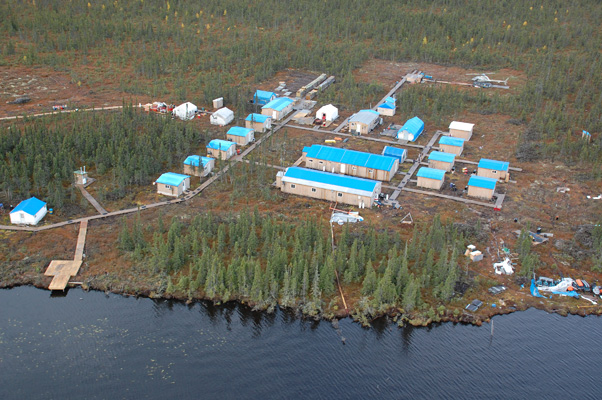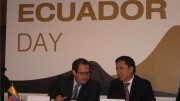In a rare turn, mining has emerged as an issue in a provincial election campaign in Ontario: the ruling Liberal party is promising to unilaterally pump up to $1 billion into infrastructure development in the remote Ring of Fire chromite camp in northern Ontario. It’s part of Premier Kathleen Wynne’s multi-billion dollar plan to ramp up infrastructure spending in the province if her party returns to power on June 12.
This Ring of Fire spending would mainly be earmarked for building a transportation corridor into the region — situated 535 km northeast of Thunder Bay — and it would represent at least half of what is probably needed to open the area up to mining. The $1-billion pledge was first put into the May 1 provincial budget, which failed to pass. However, that funding was contingent on matching dollars from the federal government.
With the federal government showing little interest in the Ring of Fire, Wynne stepped up the rhetoric at the unveiling of the party’s election platform in Thunder Bay on May 25, saying: “we have determined that this is such an important project that we need to go ahead with that investment of a billion dollars, with or without the federal government.”
The next day at the Northern Leaders’ debate in Thunder Bay, Wynne echoed the hyperbole of previous premier Dalton McGuinty by describing the Ring of Fire as “a national project, at least as important as the oilsands in Alberta.”
Even though Cliffs Natural Resources put the camp’s centrepiece project — its $3.3-billion Chromite open-pit chrome mine — on ice last November after having sunk $500 million into it, the provincial government says it’s still developing the Ring of Fire in a “smart, sustainable and collaborative way.”
Most notably, the provincial government and all nine Matawa-member First Nations communities in the area signed a regional framework agreement in March that the government calls “a first step in a historic, community based negotiation process that ensures Ontario and impacted First Nations can work together to advance Ring of Fire opportunities.”
The government has also hired consultants Deloitte to help establish a development corporation that would oversee Ring of Fire infrastructure, and be comprised of mining companies, provincial and federal governments, and First Nations. Here, Wynne has similarly stepped up the rhetoric a bit, and is newly promising to have the corporation in place within 60 days of getting re-elected.
While Cliffs’ Chromite is the dead elephant in the room, the two juniors Noront Resources and KWG Resources continue to advance their much smaller-scale base metals projects.
Noront’s Eagle’s Nest nickel–copper–PGM massive sulphide project is the second most advanced project in the area after Chromite, though it could be in production sooner because it’s much smaller, and doesn’t involve finicky chromite markets.
KWG is the more curious player, because while it has the least advanced projects — Big Daddy and Black Horse — it is brimming with ideas on how to best develop the Ring of Fire camp.
Most famously, KWG is proposing building a lower-cost rail line into the Ring of Fire camp along its staked ground — the only decent high ground in the region and, not by coincidence, the same route along which Cliffs proposed building a permanent road.
In making its infrastructure-spending pledge, the provincial government is still technically neutral as to whether the transportation would be rail or road.
However, even if more expensive, a road would be far more helpful to the remote First Nations communities in all sorts of ways, including connecting for the first time by permanent road the area’s fly-in-only settlements to the province’s health care and education facilities, and a multitude of economic opportunities.
Compared to rail, a road system is also handier for prospectors. (Think of the new Eleonore gold camp in Quebec’s James Bay region having been discovered thanks to the use by mineral explorers of roads built for Hydro-Quebec installations.)
In pushing for its rail option, KWG is also moving to reinvigorate the Ontario Northland Transportation Commission (instead of starting fresh with the new development corporation), and to revive the Ontario Northland Railroad.
But KWG’s maverick ideas don’t stop there: it is advocating a major rethink in how to process the camp’s chromite ore, and is studying a cheaper, less energy-intensive method using natural gas to convert chromite into a metallized chrome and iron alloy.





Be the first to comment on "Editorial: Ring of Fire funding – A Wynne-win?"